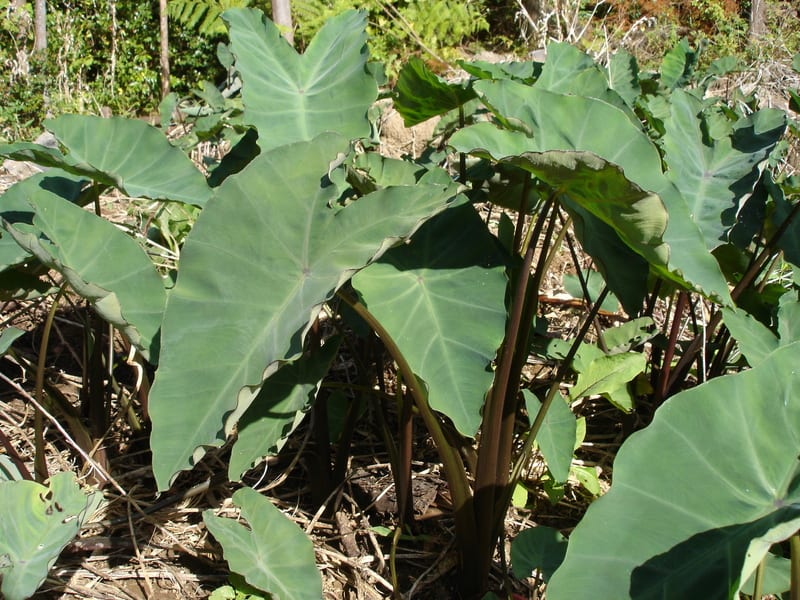
🌿 Morphology
🌞 Growing conditions
🌍 Origin and family
🌾 Uses
Warning: Despite the care taken in writing this sheet, it is essential to cross-reference sources before using or consuming any plant. When in doubt, consult a qualified professional
Permaculture uses
The corms and leaves (when cooked) are edible and a staple food in many tropical regions. It can be used as a living mulch, suppressing weeds and retaining moisture. The large leaves provide shade and can be used for composting or as wrappers. Cultivars vary in corm size, leaf color, and cold tolerance.
Permapeople description
Taro is a tropical plant primarily grown for its edible corms, which are starchy underground stems. It requires warm temperatures and moist conditions to thrive. The large, heart-shaped leaves are also ornamental, but it's crucial to note that all parts of the plant are toxic if eaten raw.
Botanical description
Colocasia esculenta is a tropical perennial plant primarily grown for its edible corms and leaves. It belongs to the Araceae family. The plant features large, heart-shaped to arrowhead-shaped leaves, typically 20-50 cm long and 15-40 cm broad, held on long petioles. The corms are starchy and vary in size and shape depending on the cultivar. It produces small flowers on a spadix surrounded by a spathe, but flowering is infrequent in cultivated varieties. Propagation is primarily vegetative.
Companion planting
Good companions include plants that benefit from shade and moist soil, such as ginger, turmeric, and leafy greens. Avoid planting near plants that compete for water or nutrients, or those that are sensitive to shade.
Propagation methods
Propagation is typically done through corm division or from offsets (small plants that grow from the main corm). Stem cuttings can also be rooted, although this method is less common. Seeds are viable but require specific conditions to germinate and are not commonly used for propagation.
History and traditions
Taro has a long history of cultivation, dating back thousands of years in Southeast Asia and the Pacific Islands. It is a culturally significant food source, often associated with rituals and ceremonies. In many cultures, it is considered a symbol of life and sustenance. It was introduced to Africa and the Americas through trade and colonization.
Usage calendar
Planting: Spring to early summer, after the last frost. Harvesting: 6-12 months after planting, when the leaves begin to yellow. Flowering: Rarely occurs in cultivated plants. Pruning: Remove dead or damaged leaves as needed.
